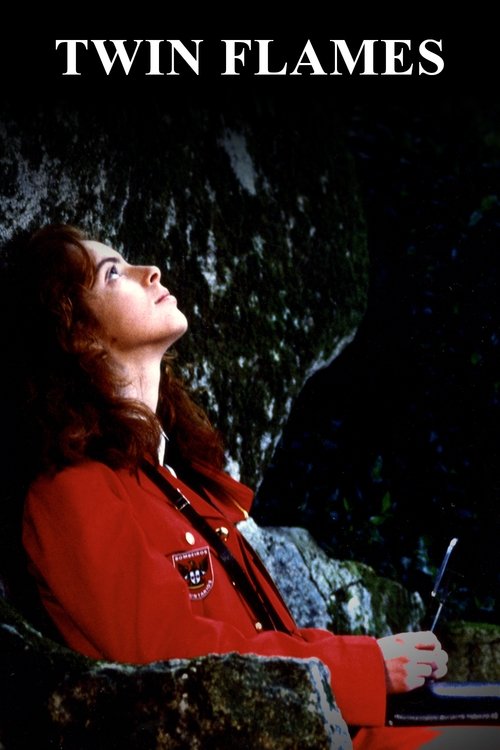
Ask Your Own Question
What is the plot?
What is the ending?
In the ending of "Twin Flames," the main characters, Michael and Sarah, confront their deep emotional connection and the challenges that have arisen throughout their tumultuous relationship. Ultimately, they realize the importance of their bond and choose to embrace their love, leading to a resolution of their conflicts.
As the film draws to a close, Michael and Sarah find themselves at a pivotal moment. After a series of misunderstandings and emotional turmoil, they come together in a heartfelt reunion. They acknowledge the pain they have caused each other but also recognize the strength of their connection. In a powerful scene, they share their fears and hopes, leading to a cathartic moment of reconciliation. The film ends on a hopeful note, suggesting that their love can overcome the obstacles they faced.
Now, let's delve into the ending in a more detailed, chronological narrative.
The final act of "Twin Flames" begins with Michael standing alone in a dimly lit room, the weight of his decisions heavy on his shoulders. He reflects on the tumultuous journey he has shared with Sarah, filled with passion, conflict, and moments of profound connection. The camera captures the flickering shadows on the walls, mirroring the uncertainty in his heart.
Meanwhile, Sarah is seen in a nearby park, sitting on a bench, her expression a mix of sadness and determination. She clutches a small token that Michael had given her earlier in their relationship, a symbol of their love that now feels both precious and painful. As she gazes at the sky, tears well up in her eyes, but there is also a glimmer of hope. She knows that their love is worth fighting for, despite the challenges they have faced.
The scene shifts back to Michael, who, after much contemplation, decides to seek Sarah out. He drives through the city, the streets illuminated by the glow of streetlights, reflecting his inner turmoil. The music swells, underscoring his emotional journey as he navigates through memories of their time together--moments of laughter, intimacy, and the heartache that followed.
When Michael arrives at the park, he spots Sarah from a distance. The camera captures the moment he hesitates, his heart racing as he approaches her. Sarah looks up, and their eyes meet, a silent acknowledgment of the love that still exists between them. The tension in the air is palpable, filled with unspoken words and unresolved feelings.
As Michael sits beside her, the conversation begins tentatively. They both express their fears and regrets, the dialogue punctuated by moments of silence that speak volumes. Sarah reveals how she felt abandoned and hurt by Michael's actions, while Michael admits to his own insecurities and the mistakes he made. The vulnerability in their voices is raw, and the audience can feel the weight of their shared history.
In a pivotal moment, Michael takes Sarah's hand, a gesture that signifies his commitment to making things right. He tells her that he cannot imagine his life without her, and the sincerity in his eyes conveys the depth of his feelings. Sarah, moved by his words, begins to soften, her defenses lowering as she realizes that their love has the power to heal their wounds.
The climax of the film occurs as they embrace, a powerful moment filled with emotion. The camera captures the tears streaming down Sarah's face, but they are tears of relief and joy. Michael holds her tightly, and the world around them fades away, leaving only the two of them in their own universe. This moment symbolizes their decision to confront their past and move forward together.
As the film concludes, Michael and Sarah walk hand in hand through the park, the sun setting in the background, casting a warm glow over them. The final shot lingers on their intertwined fingers, a visual representation of their renewed commitment to each other. The music swells, and the screen fades to black, leaving the audience with a sense of hope and the belief that love can triumph over adversity.
In summary, the fates of Michael and Sarah are intertwined as they choose to embrace their love, overcoming the challenges that threatened to tear them apart. Their journey reflects the film's central themes of connection, healing, and the enduring power of love.
Is there a post-credit scene?
The movie "Twin Flames," produced in 1992, does not have a post-credit scene. The film concludes its narrative without any additional scenes or content after the credits roll. The story wraps up with the resolution of the main characters' arcs, focusing on their emotional journeys and the themes of love and connection that permeate the film. The absence of a post-credit scene allows the audience to reflect on the film's poignant conclusion without any further distractions.
How does the character of Sarah evolve throughout the film?
Throughout the film, Sarah evolves from a hesitant artist unsure of her place in the world to a confident woman who embraces her identity and her connection with Alex. Her journey reflects her struggle with self-doubt and the realization of her worth, culminating in her acceptance of love and vulnerability.
What is the significance of the twin flames concept in the movie?
The twin flames concept in the movie symbolizes the deep, spiritual connection between two individuals who are destined to be together. This connection is portrayed through the intense emotional and physical experiences of the main characters, highlighting their struggles and the transformative power of love.
How do the main characters, Alex and Sarah, first meet in the film?
Alex and Sarah first meet at a local art gallery where Sarah is showcasing her artwork. Their initial interaction is charged with an unexplainable attraction, as they both feel an immediate connection that hints at their deeper bond as twin flames.
What challenges do Alex and Sarah face in their relationship?
Alex and Sarah face numerous challenges, including external pressures from their families and friends, personal insecurities, and the fear of losing each other. These obstacles test their commitment and force them to confront their own emotional baggage, ultimately shaping their journey together.
What role does the setting play in the development of Alex and Sarah's relationship?
The setting plays a crucial role in the development of Alex and Sarah's relationship, with various locations such as the art gallery, their intimate home, and the serene natural landscapes serving as backdrops for their emotional exchanges. Each setting enhances the mood of their interactions, reflecting their inner turmoil and the beauty of their connection.
Is this family friendly?
"Twin Flames," produced in 1992, is a film that delves into themes of love, loss, and the complexities of relationships. While it does explore deep emotional connections, there are several aspects that may be considered objectionable or upsetting for children or sensitive viewers.
-
Intense Emotional Scenes: The film features several moments of emotional turmoil, including heartbreak and existential crises, which may be difficult for younger audiences to process.
-
Themes of Betrayal: There are scenes that involve betrayal and infidelity, which could be distressing for some viewers, particularly those sensitive to themes of trust and loyalty.
-
Depictions of Conflict: The film includes arguments and confrontations between characters that may be intense and could evoke feelings of discomfort or anxiety.
-
Loss and Grief: The narrative touches on themes of loss, which may resonate deeply and evoke sadness, particularly in scenes that deal with the aftermath of a significant emotional event.
-
Romantic Content: There are romantic elements that may not be suitable for younger viewers, including discussions of intimate relationships that could be considered mature.
Overall, while "Twin Flames" offers a rich narrative, its emotional depth and mature themes may not be appropriate for all audiences, especially children or those who are sensitive to such content.



























